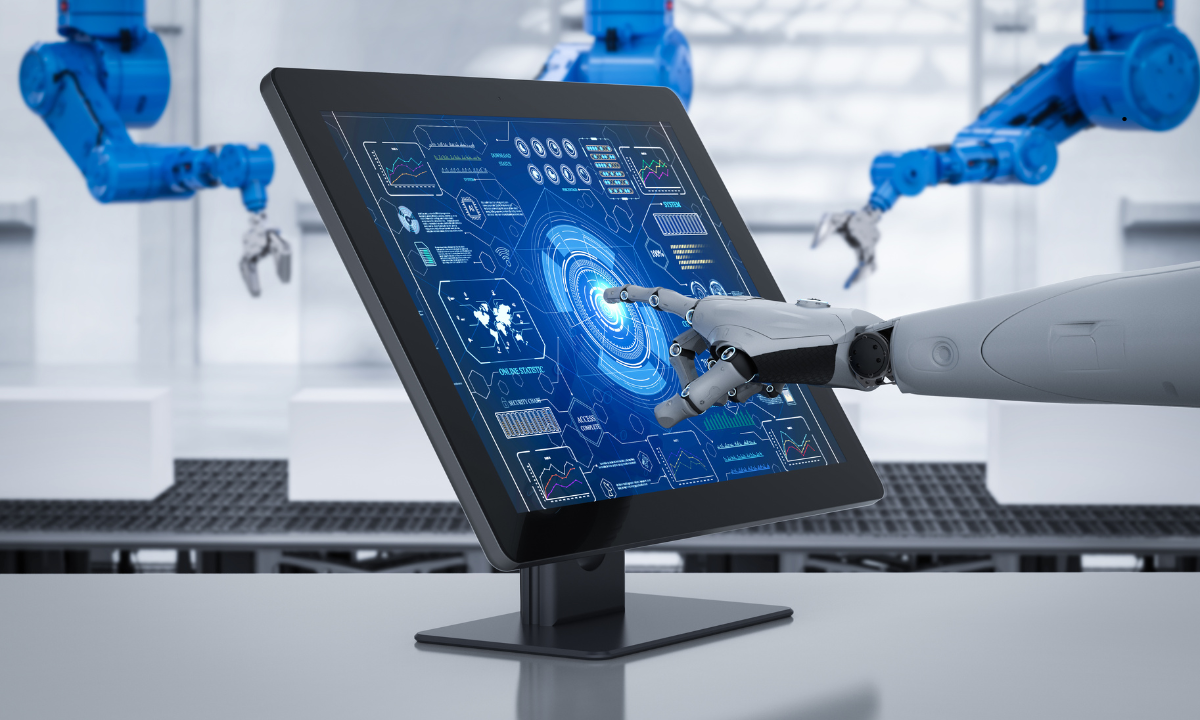Fiber robotic systems, such as the Robotic Optical Management Engine (ROME), represent a cutting-edge evolution in optical fiber connectivity and network management. These systems rely on advanced automation to ensure high-fidelity connections in dynamic, high-density environments. Central to their performance are sub-micron precision encoders and nanometer-scale motor systems, which enable unparalleled accuracy and reliability. This whitepaper explores the critical role of these components in achieving the precision required for fiber optic applications, their technical advantages, and their impact on operational efficiency and scalability.
1. Introduction
The modern telecommunications landscape demands robust, scalable, and efficient solutions to manage optical fiber networks. Systems like ROME leverage robotics to automate the connection, disconnection, and reconfiguration of optical fibers, supporting thousands of individual connections within a compact footprint. Unlike traditional manual or electronic systems, fiber robotic platforms must operate with extreme precision to ensure signal integrity, minimize latency, and maintain uptime under varying conditions. At the heart of this precision lie sub-micron encoders and nanometer-scale motor systems, which together enable the fine-tuned control necessary for such advanced applications.
This whitepaper examines why these components are indispensable for fiber robotic systems, focusing on their contributions to accuracy, reliability, and adaptability.
2. The Role of Precision in Fiber Optic Robotics
Optical fiber connectivity is inherently sensitive to misalignment. A single-mode fiber core, typically 8-10 microns in diameter, requires alignment within fractions of a micron to prevent signal loss. In a system like ROME, which manages tens of thousands of connections, even minor deviations can cascade into significant performance degradation. Precision at the sub-micron and nanometer scales is therefore not a luxury but a necessity.
2.1 Challenges in Fiber Optic Management
- High Density: Modern data centers and telecom hubs pack thousands of fibers into limited spaces, requiring compact, precise robotic movements.
- Dynamic Reconfiguration: Frequent connection changes demand rapid, repeatable, and error-free operations.
- Environmental Resilience: Systems must perform reliably despite vibrations, temperature fluctuations, or power interruptions.
2.2 The Precision Imperative
Sub-micron encoders provide positional feedback with resolutions finer than one micrometer, while nanometer-scale motor systems execute movements with step sizes as small as a billionth of a meter. Together, they ensure that robotic manipulators align fiber ends with the exactitude required for optimal optical performance.
3. Sub-Micron Encoders: The Eyes of Precision
Encoders are sensors that translate mechanical motion into digital signals, providing real-time feedback on position, speed, and direction. In fiber robotic systems, sub-micron encoders are critical for several reasons.
3.1 Unmatched Resolution
Sub-micron encoders offer positional accuracy below one micrometer—often as fine as 0.1 microns or better. This resolution allows the system to detect and correct deviations smaller than the diameter of a fiber core, ensuring perfect alignment during connections.
3.2 Repeatability and Consistency
In a high-throughput environment, robotic arms must repeatedly position fibers with zero cumulative error. Sub-micron encoders enable this by providing absolute or high-resolution incremental feedback, eliminating drift over millions of cycles.
3.3 Adaptive Control
Advanced encoders can integrate with intelligent control systems to adapt to real-time conditions, such as mechanical wear or thermal expansion, maintaining precision throughout the system’s lifespan.
4. Nanometer-Scale Motor Systems: The Hands of Precision
Motors drive the physical movements of robotic arms in systems like ROME. Nanometer-scale motor systems, often based on piezoelectric or servo technologies, provide the fine control needed for fiber manipulation.
4.1 Granular Motion Control
With step sizes in the nanometer range (e.g., 1-10 nm), these motors can adjust fiber positions with a level of granularity that exceeds traditional stepper or DC motors by orders of magnitude. This is essential for aligning fibers within tight tolerances.
4.2 High Speed with Low Inertia
Nanometer-scale motors combine precision with rapid response times, enabling fast reconfiguration without overshooting or oscillation. Their low inertia ensures smooth, controlled movements critical for delicate fiber handling.
4.3 Energy Efficiency
Despite their precision, these motors operate with minimal power consumption—often 50-150 watts in systems like ROME—making them ideal for continuous operation in energy-conscious environments.
5. Synergy of Encoders and Motors in ROME
The integration of sub-micron encoders and nanometer-scale motors creates a closed-loop control system that is greater than the sum of its parts. In ROME, this synergy manifests in several key ways:
5.1 Closed-Loop Feedback
Encoders continuously monitor motor positions, feeding data back to the control system. If a movement deviates by even a fraction of a micron, the motor adjusts instantly, ensuring alignment remains within specification.
5.2 Robustness Under Stress
Fiber robotic systems must operate in challenging conditions, such as power outages or seismic events. The precision of this duo allows ROME to maintain mechanical latching integrity, preserving connections without electronic dependency.
5.3 Scalability
As networks grow, the ability to manage thousands of fibers with consistent precision becomes paramount. The encoder-motor combination enables ROME to scale from hundreds to millions of connections without sacrificing performance.
6. Technical Advantages and Industry Impact
6.1 Superior Optical Performance
By achieving sub-micron alignment, ROME minimizes insertion loss and back-reflection, exceeding industry standards for optical signal quality.
6.2 Operational Efficiency
Automation with such precision reduces human error, accelerates deployment, and lowers maintenance costs, offering a compelling return on investment for telecom providers.
6.3 Future-Proofing
As fiber networks evolve toward higher bandwidths and denser configurations, the precision of sub-micron encoders and nanometer motors ensures compatibility with next-generation technologies.
7. Conclusion
Fiber robotic systems like ROME redefine the possibilities of optical network management through automation and precision. Sub-micron encoders and nanometer-scale motor systems are the technological backbone of this revolution, providing the accuracy, reliability, and adaptability needed to meet modern demands. Without these components, the promise of high-fidelity, scalable fiber connectivity would remain out of reach. As the industry continues to innovate, the role of precision engineering will only grow, cementing these technologies as foundational to the future of telecommunications.











